Augmented and diminished intervals can be seen in melodies and chords across many genres of music. They are the most challenging types of intervals to understand, but don’t let that put you off as we’re here to help.
In the article we’ll explore how augmented and diminished intervals are different from major/minor/perfect intervals. You will also be able to listen to examples and understand how to work our aug and dim intervals for yourself.
If you need a recap of the basics, check out our guide to major, minor and perfect intervals.
What are augmented and diminished intervals.
To create an augmented interval you can:
- Sharpen a major interval by a half-step
- Sharpen a perfect interval by a half-step
Another ways to say this is the augmented intervals are a half-step larger than major and perfect intervals.
To create a diminished interval you can:
- Lower a perfect interval by a half-step
- Lower a minor interval by a half step
Or we could say that diminished intervals are a half-step smaller than minor and perfect intervals.
Have a look at the diagrams below which summarise these relationships. The first is for major/minor intervals and the second is for perfect intervals.
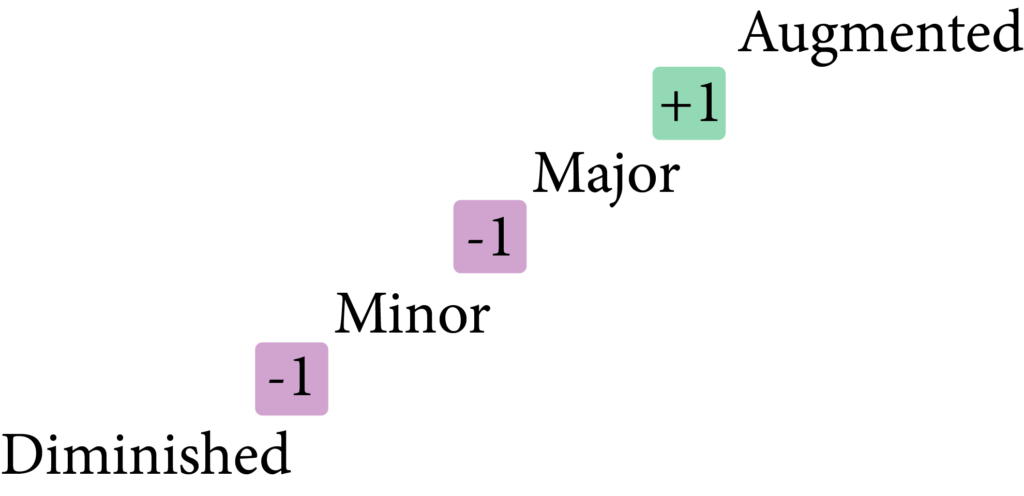
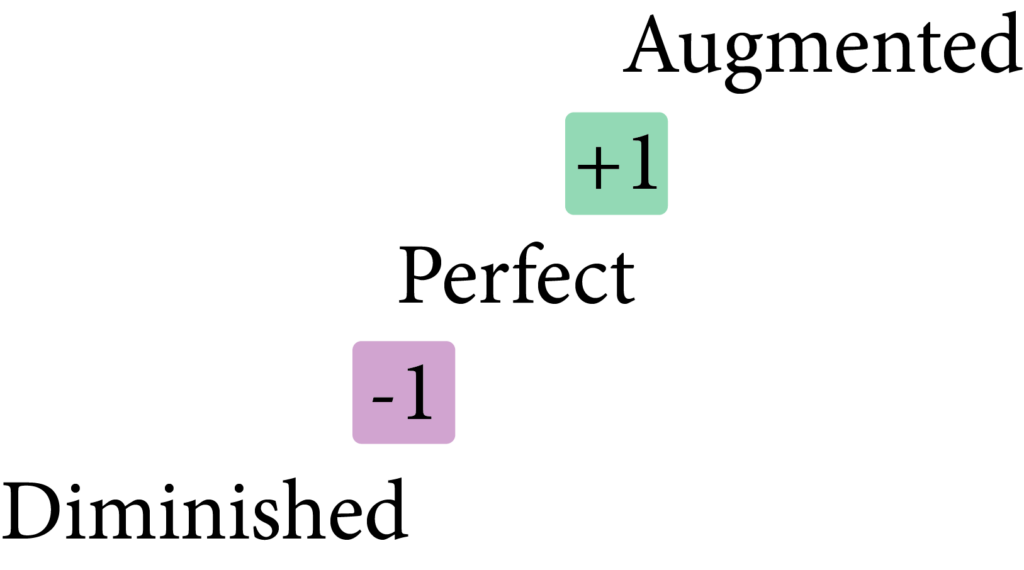
It is very important that when raising or lowering an interval to make an augmented and diminished interval you do not change the letter name of the note. If you do then the interval name will change. This can be a little confusing but we will look at examples to show the importance of this.
What do Augmented and Diminished intervals sound like?
Augmented and diminished intervals share a common trait: they introduce dissonance and instability into music. These intervals create tension and complexity, challenging the listener’s expectations and offering an intriguing and sometimes unsettling experience. Augmented intervals stretch the distance between two notes, generating an intense and emotionally charged clash.
Similarly, diminished intervals compress the distance, producing a dissonant quality. Despite their differences, both intervals add depth and complexity to a musical passage, allowing composers to create dramatic moments and evoke a range of emotions with their distinct and captivating sound.
Due to their dissonance, both types of intervals put the listener to wanting a resolution, either through an upward or downward shift. Depending on the effect that the composer wants they can be used to create a resolve tension, order as ascending or descending progression, such as line cliches. Line cliches are where a chord progression creates a descending or ascending pattern, usually by moving in half-steps. Check out more about line cliches below.
Augmented Interval Examples
An augmented interval is ONE semitone larger than a major or perfect interval.
Let’s have a look at the below interval:

As you can see we have an F natural to A sharp. A is the 3rd degree of F major, so we have some kind of 3rd interval.
Is A sharp in F major? No it is not… In F major we have an A natural.
Take a look at the piano below. We have moved up 1 half-step from A to A sharp.
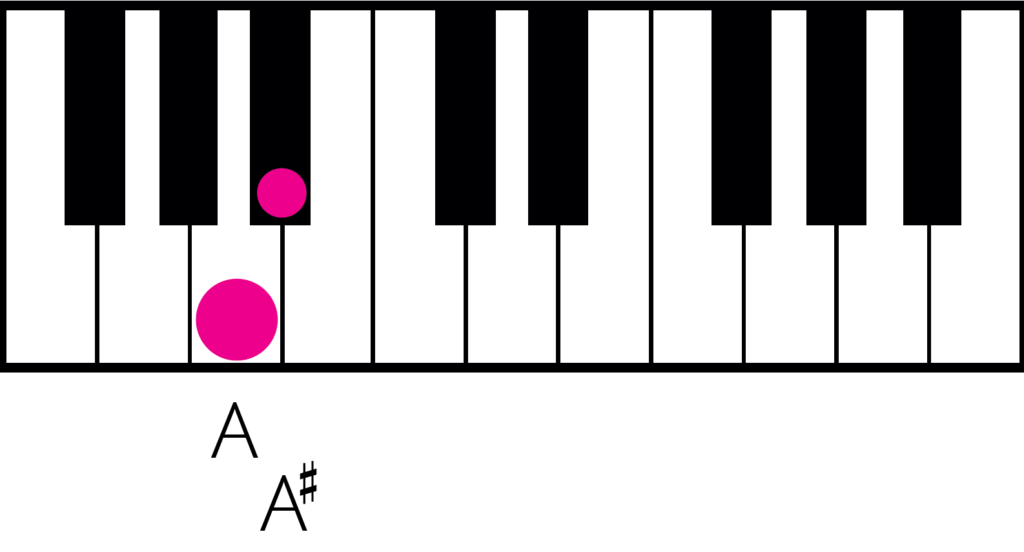
This means we have an Augmented 3rd interval.
Let’s try one more!
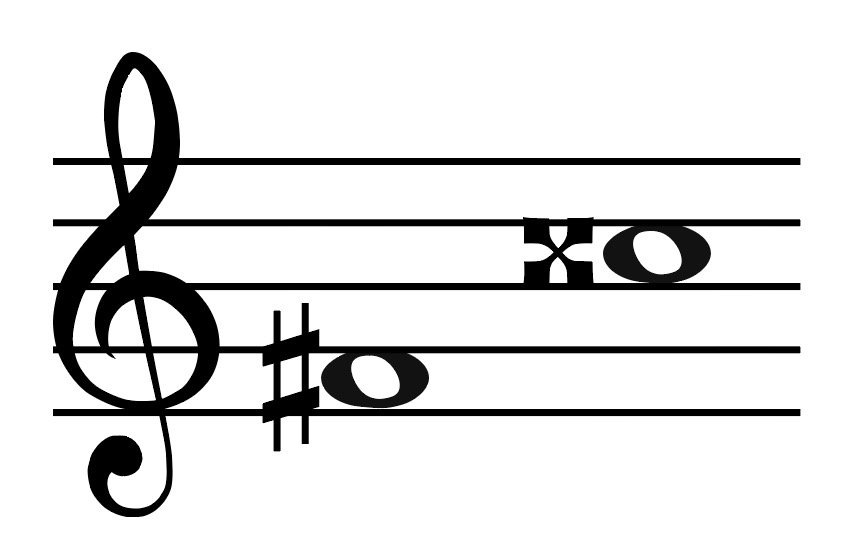
We have an F sharp followed by a C double sharp.
Is C double sharp in F sharp major? No it is not… In F sharp major we have a C sharp, with F sharp to C sharp being a perfect 5th
By sharpening the F#-C# to F#-C double sharp we have created an Augmented 5th.
Notation for Augmented Intervals
Augmented intervals can be labelled in three different ways. The below use the example of an augmented 5th.
- Aug 5th
- A5
- +5
Diminished intervals
A diminished interval is ONE semitone smaller than a minor or perfect interval.
Let’s have a look at the below interval:
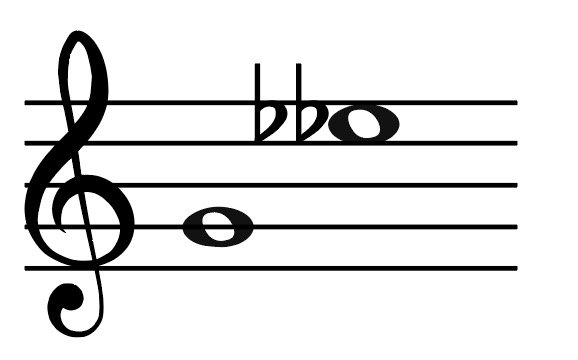
As you can see here we have a G natural to E double flat.
Is E double flat in G major? No it is not… In G major we have an E natural.
Take a look at the piano below… How many semitones have you gone down to reach E double flat?
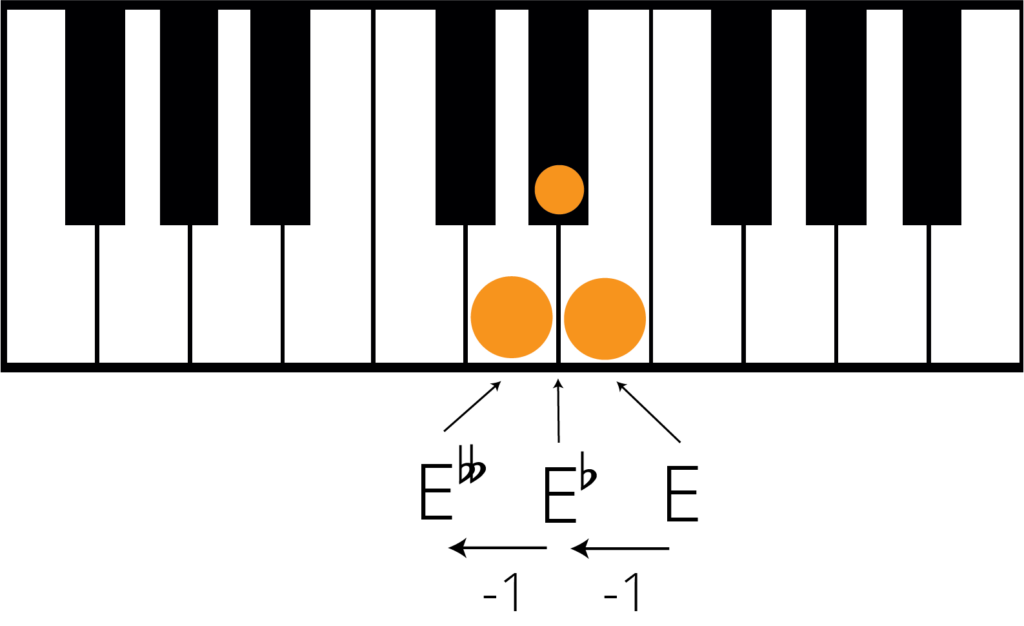
We have gone down two semitones. This makes this interval a diminished 6th!
Let’s try another one
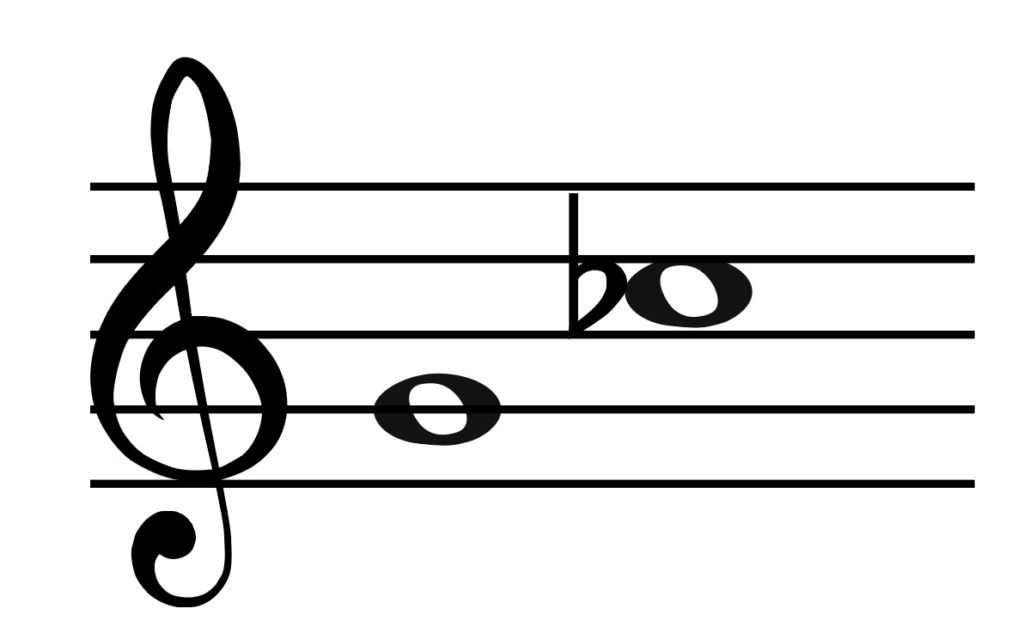
Here we have a G natural to C flat.
Is C flat in G major? No it is not… In G major we have a C natural.
Take a look at the piano below… How many semitones have you gone down to reach C flat?
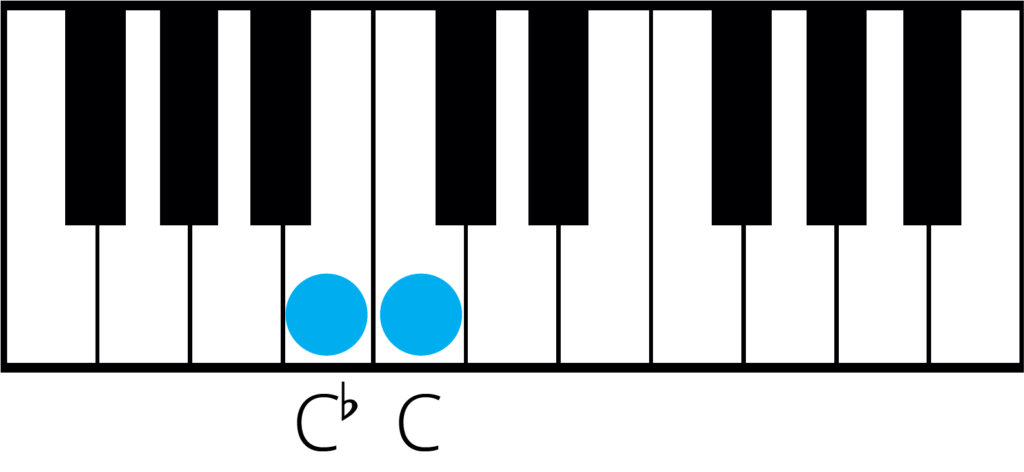
That’s correct, we have gone down one semitone! Now, this is where we can get confused, the interval G-C is a 4th. Remember a 4th is not major/minor, it is perfect! This means we only need to go down one semitone in order to reach a diminished 4th!
Notation for Diminished Intervals
Diminished intervals can be labelled in three different ways. The below use the example of an diminished 3rd.
- Dim 3rd
- D3
- -3
Ear Training and Intervals
To develop as a musician you’ll want to be able to recognise intervals by ear. This is where ear training comes in, as the more you practice, the better your’ll get.
My recommendation for this is Tonegym as they have a comprehensive and fun program for training your ears. It’s what has gotten the best results with for my own students.
In the ‘tools’ section of their site, Tonegym even have an interval memorizer that allows you to learn every type of interval.
For an in-depth look at ear training, here’s my full review of Tonegym.
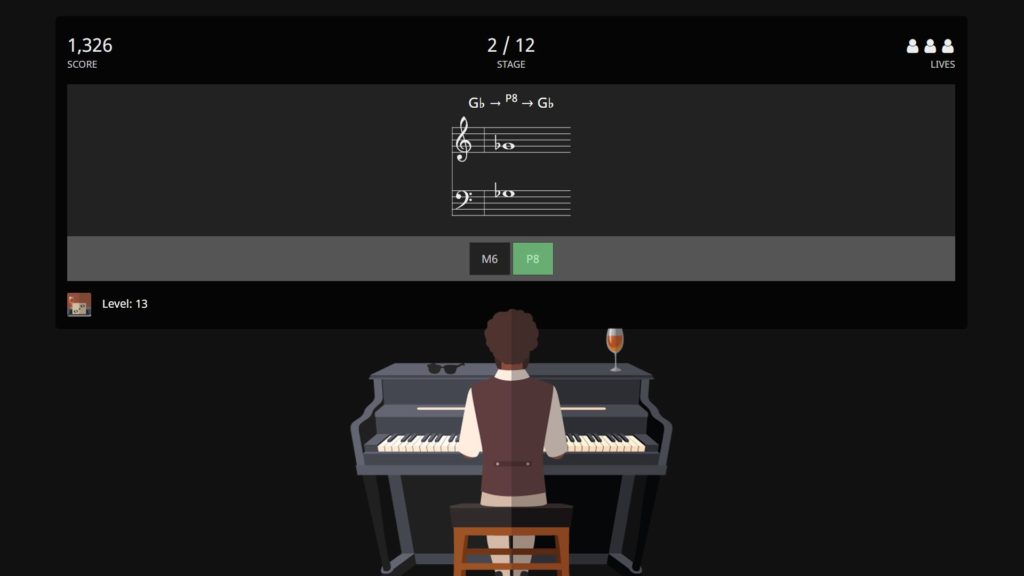
Intervals and Enharmonic Equivalence
You have have picked up on the fact that diminished and augmented intervals are equivalent in distance to other (easier to name) intervals. See the example below that shows that G – Cb, which is a diminished 4th, is equivalent to G – B (a Major 3rd).
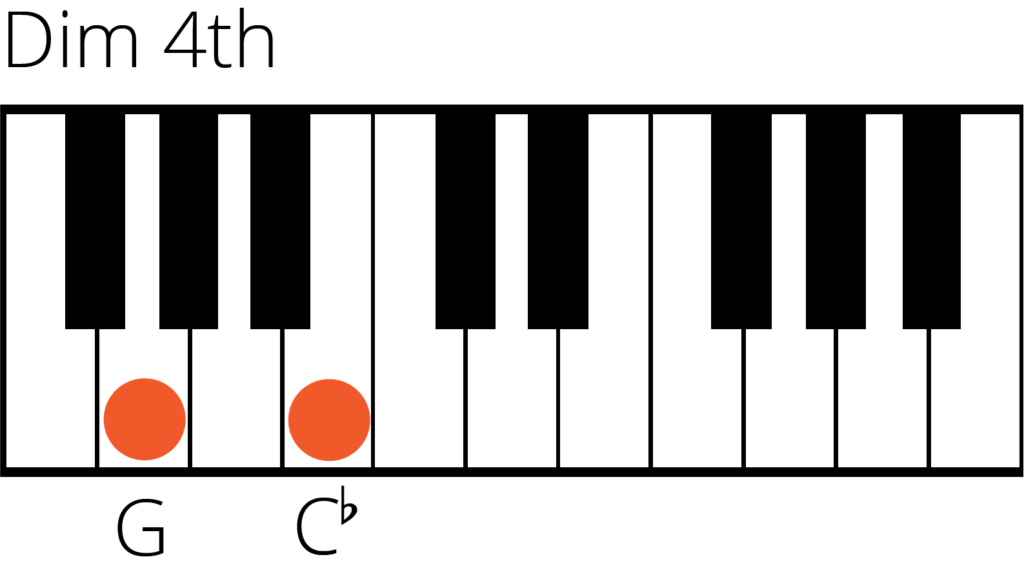
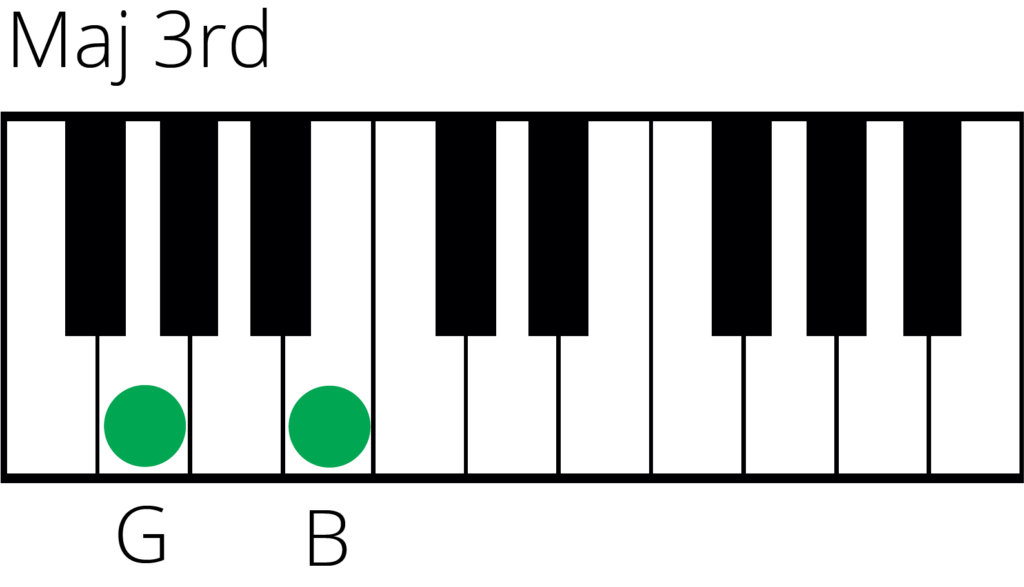
Below is a chart so that you can see all of the equivalent intervals.

What’s next….?
- Learn about specific intervals with our interval guides.
- Use intervals in chords, with our complete guide to chords.
